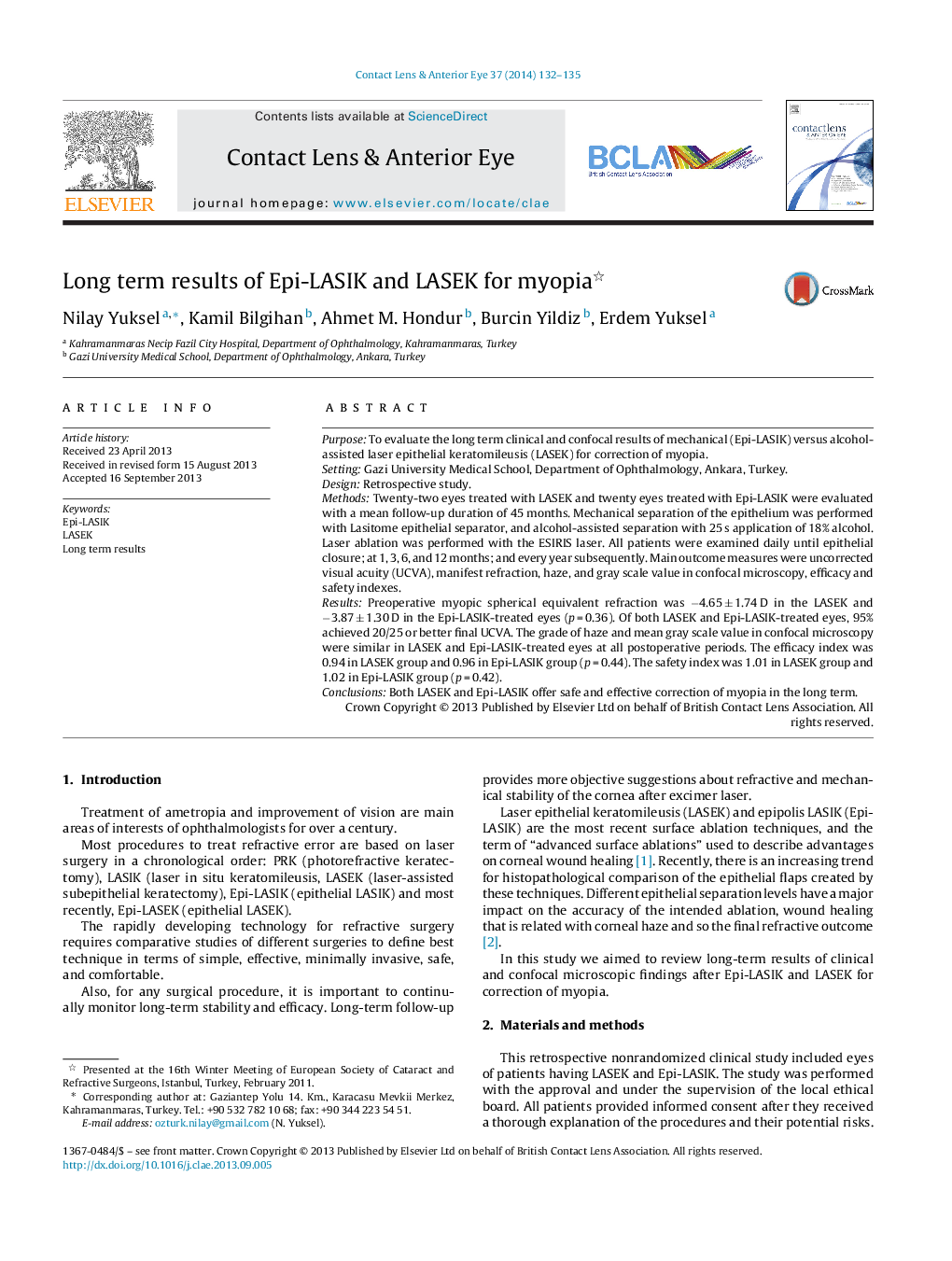| Article ID | Journal | Published Year | Pages | File Type |
|---|---|---|---|---|
| 2693090 | Contact Lens and Anterior Eye | 2014 | 4 Pages |
PurposeTo evaluate the long term clinical and confocal results of mechanical (Epi-LASIK) versus alcohol-assisted laser epithelial keratomileusis (LASEK) for correction of myopia.SettingGazi University Medical School, Department of Ophthalmology, Ankara, Turkey.DesignRetrospective study.MethodsTwenty-two eyes treated with LASEK and twenty eyes treated with Epi-LASIK were evaluated with a mean follow-up duration of 45 months. Mechanical separation of the epithelium was performed with Lasitome epithelial separator, and alcohol-assisted separation with 25 s application of 18% alcohol. Laser ablation was performed with the ESIRIS laser. All patients were examined daily until epithelial closure; at 1, 3, 6, and 12 months; and every year subsequently. Main outcome measures were uncorrected visual acuity (UCVA), manifest refraction, haze, and gray scale value in confocal microscopy, efficacy and safety indexes.ResultsPreoperative myopic spherical equivalent refraction was −4.65 ± 1.74 D in the LASEK and −3.87 ± 1.30 D in the Epi-LASIK-treated eyes (p = 0.36). Of both LASEK and Epi-LASIK-treated eyes, 95% achieved 20/25 or better final UCVA. The grade of haze and mean gray scale value in confocal microscopy were similar in LASEK and Epi-LASIK-treated eyes at all postoperative periods. The efficacy index was 0.94 in LASEK group and 0.96 in Epi-LASIK group (p = 0.44). The safety index was 1.01 in LASEK group and 1.02 in Epi-LASIK group (p = 0.42).ConclusionsBoth LASEK and Epi-LASIK offer safe and effective correction of myopia in the long term.
